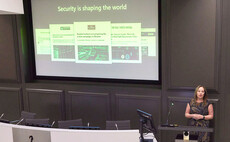Will HTML5 kill off Adobe Flash and Microsoft Silverlight as the standard finally reaches 'recommendation' status?
HTML5 has finally reached "recommendation" status at the Worldwide Web Consortium (W3C), the body responsible for developing the standards for HTML, the language behind the Worldwide Web. It should...
To continue reading this article...
Join Computing
- Unlimited access to real-time news, analysis and opinion from the technology industry
- Receive important and breaking news in our daily newsletter
- Be the first to hear about our events and awards programmes
- Join live member only interviews with IT leaders at the ‘IT Lounge’; your chance to ask your burning tech questions and have them answered
- Access to the Computing Delta hub providing market intelligence and research
- Receive our members-only newsletter with exclusive opinion pieces from senior IT Leaders




















